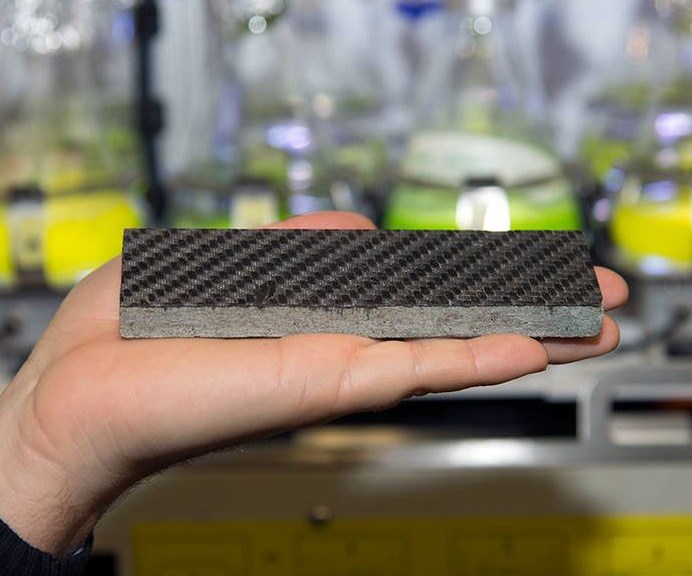Technical University of Munich researchers explore using algae to make carbon fiber
The process uses algae to convert CO2 from the atmosphere and manufacturing exhaust into algae oil, which is then used to produce polyacrylonitrile (PAN) carbon fiber precursor.
Share

Source | Technical University of Munich
Technical University of Munich (TUM, Munich, Germany) researchers have been working to develop a process that uses halophilic algae, algae that thrive in high salt concentrations, to remove CO2 from the atmosphere and subsequently to make carbon fiber.
According to Thomas Brück, who heads the project along with a team at the Algae Cultivation Center of the Technical University of Munich, the process converts atmospheric CO2 into biomass, an organic material used as a renewable energy source, and, in a subsequent stage, algae oil. The algae oil is produced by a nutrient depletion phase where nitrogen is limited in the cultivation medium, triggering the accumulation of lipids.
“We then hydrolyze the algae oil so that we actually split the free fatty acids from the glycerol backbone,” explains Brück. The fatty acids are then used to generate biofuels, chemicals for the lubricant industry or thermoplastics, he says. The remaining glycerol residue is turned into acrylonitrile, which is polymerized to yield polyacrylonitrile (PAN), the precursor for approximately 90% of today’s carbon fiber production.
While the PAN precursor can be pyrolized via standard means, TUM has also developed a pyrolysis process that carbonizes the PAN fibers using parabolic solar reflectors — curved solar mirrors — in order to yield carbon fibers in a CO2 neutral manner.
“We do the pyrolysis in focused glass tubes in the center of those mirrors,” says Brück. “There you can actually generate temperatures up to 3,000ºC, and with that technology, you’re completely emission-free and also cheaper because you’re using sunlight.”
According to Brück, the carbon fiber created using the algae-based PAN has the same chemical composition as classical carbon fibers currently in use today and the same physical properties as those carbon fibers that come from petroleum resources.
“And since we can combine the thermoplastics that we generate from the fatty acid part with the carbon fiber, we can actually now do 3D printable carbon fiber composites,” says Brück. TUM is also currently working with a partner to develop CO2 negative building materials such as carbon fiber composite-reinforced granite from the algae-based carbon fiber.
Related Content
-
TU Munich develops cuboidal conformable tanks using carbon fiber composites for increased hydrogen storage
Flat tank enabling standard platform for BEV and FCEV uses thermoplastic and thermoset composites, overwrapped skeleton design in pursuit of 25% more H2 storage.
-
JEC World 2023 highlights: Innovative prepregs, bio-resins, automation, business development
CW’s Jeff Sloan checks in with JEC innovations from Solvay, A&P, Nikkiso, Voith, Hexcel, KraussMaffei, FILL, Web Industries, Sicomin, Bakelite Synthetics, Westlake Epoxy and Reliance Industries.
-
Syensqo becomes new Solvay specialty materials company
Syensqo represents what was Solvay Composite Materials, focused on delivering disruptive material technologies and supporting growing customer needs.














.jpg;maxWidth=300;quality=90)
